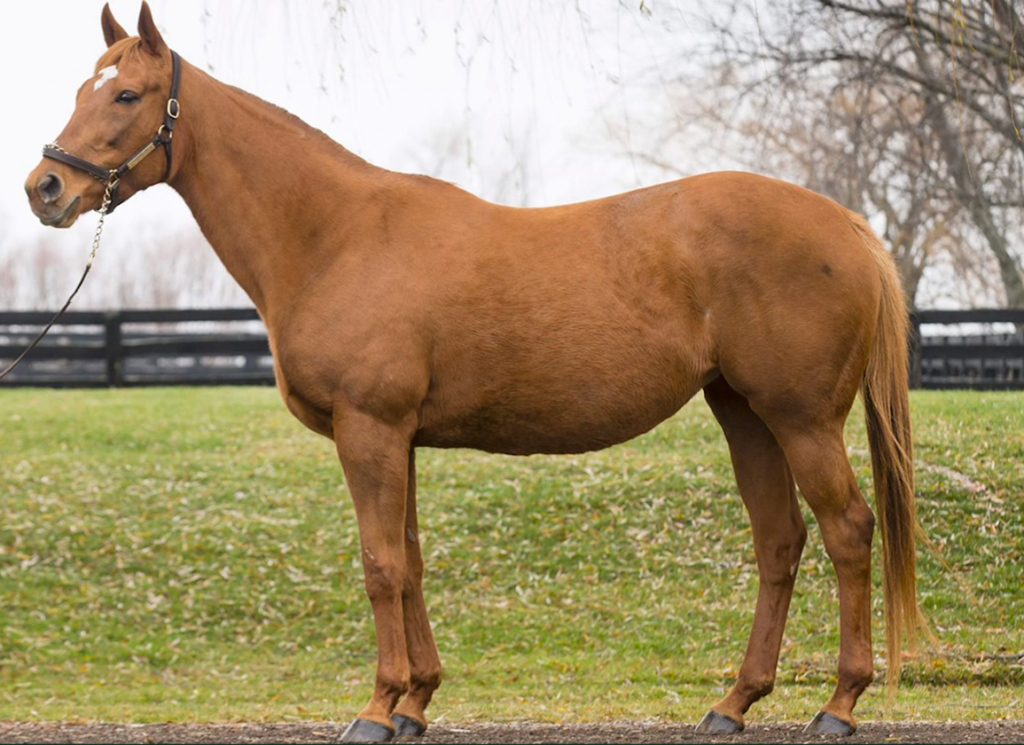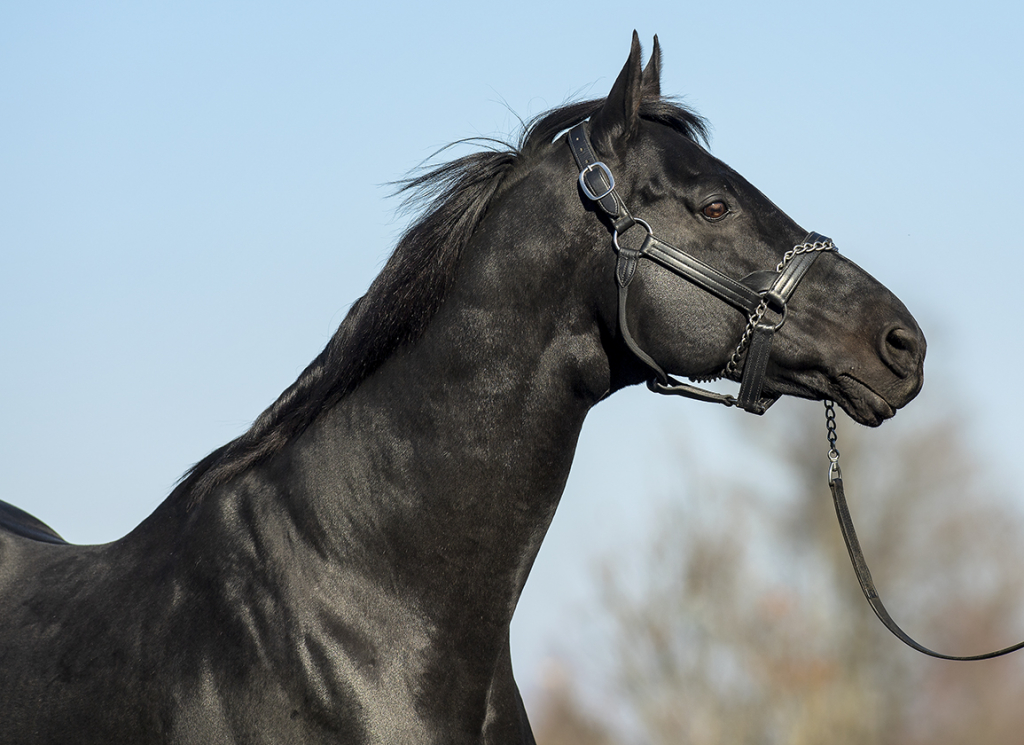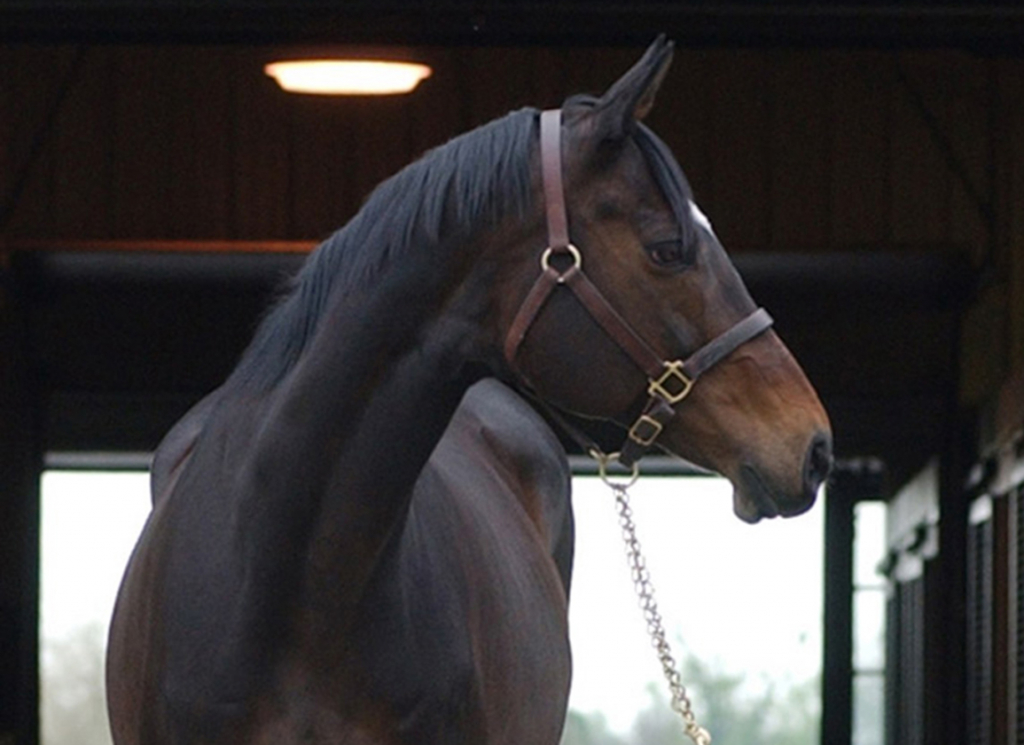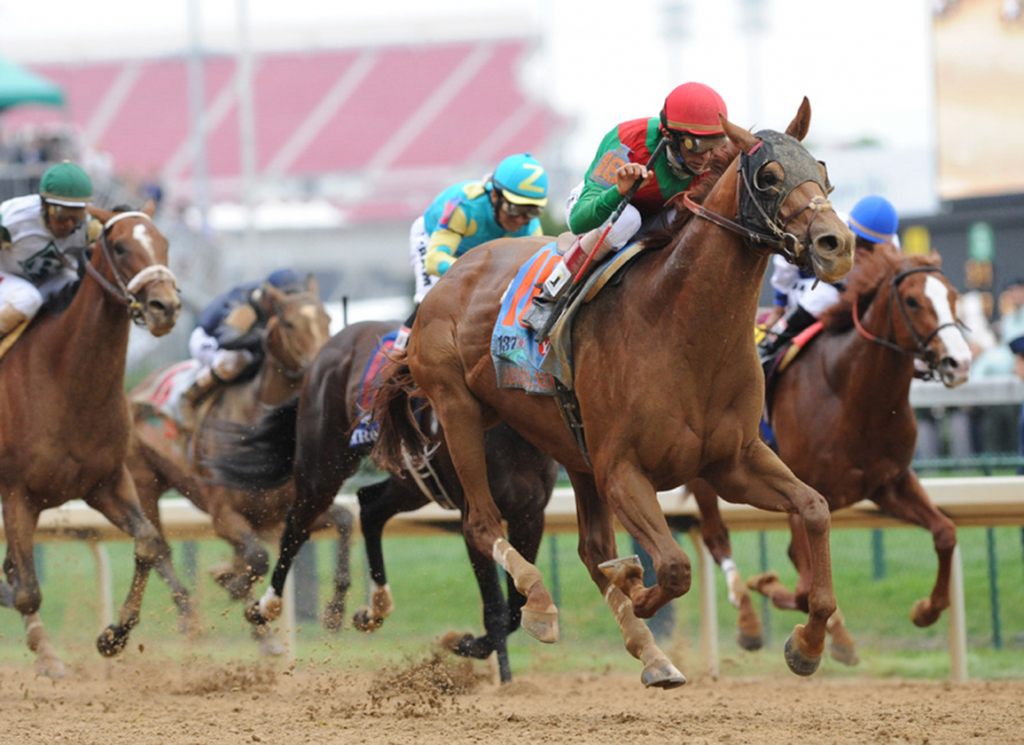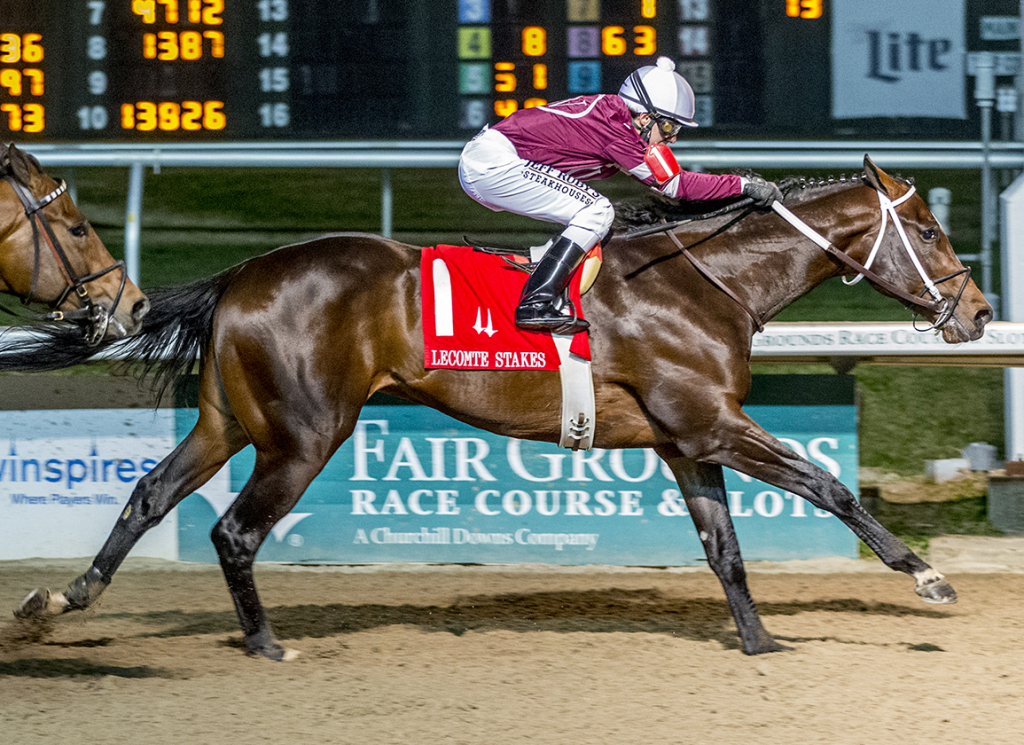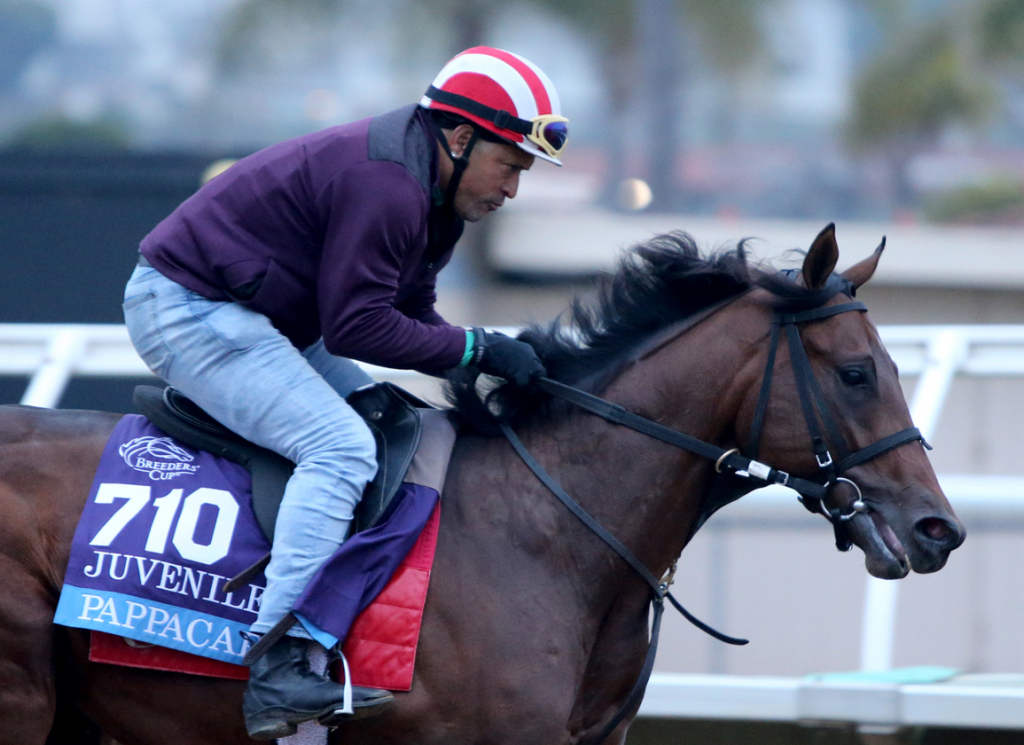Here we are, then, in what Oliver Hardy could only call “another nice mess.” But let's disentangle this flourishing sapling Messier (Empire Maker) from the tentacles that may restrain him from a timely bloom on the first Saturday in May, and take a moment to celebrate not only the storied nursery that cultivated his family but also the alert grafting that now involves another farm in his future success.
For this horticultural analogy permits only one classification of the spectacular GIII Robert S. Lewis S. winner–as a young maple. Messier represents a fifth generation of breeding by Sam-Son, the iconic Canadian farm that began a poignant process of disbandment last winter, nearly half a century after its foundation by Ernie Samuel. With 84 Sovereign Awards, 14 Grade I winners and four Eclipse Awards, Samuel and his heirs–latterly with the skilled assistance of long-serving farm manager David Whitford–had by then created an indelible legacy in the North American Thoroughbred. This had been freshly condensed by the 2019 GI Kentucky Derby winner Country House (Lookin At Lucky), whose grandsire Smart Strike was out of a daughter of Samuel's foundation mare No Class (Nodouble); and whose second dam was by her son Sky Classic (Nijinsky).
Among the 21 Sam-Son mares that realized $6.75 million at the 2021 Keeneland January Sale–supplementing the $3.45 million banked by four headline acts at Fasig-Tipton a few weeks previously–was an 11-year-old daughter of Smart Strike, Checkered Past, a dual winner of the listed Trillium S. at Woodbine and offered in foal to Candy Ride (Arg). Her catalog page listed two unraced daughters, plus a colt from what had meanwhile proved to be the penultimate crop of Empire Maker. He had been sold as a yearling, at Fasig-Tipton the previous September, to a syndicate of Bob Baffert's patrons for $470,000.
That price caught the eye of Hunter Simms and Kitty Day of Warrendale, who were scouting the dispersal on behalf of Silesia Farm. They noted that the mare's first foal, a filly by Uncle Mo, had made only $22,000; her second daughter, also by Empire Maker, had made $200,000.
“So to see that colt sitting there on $470,000, that piqued our interest,” Simms recalls. “We really liked this mare: a daughter of Smart Strike, and going down the page you saw Catch the Thrill (A.P. Indy), Diamond Fever (Seeking the Gold), Seeking the Ring (Seeking the Gold). I mean, all very nice horses; and she had all the attributes Kitty and I like to see when we're purchasing mares for people. But a lot of the draw was that Empire Maker, and the connections that he sold to. Donato [Lanni, agent] has a very good eye, and we knew where the horse was going to be trained. And then you had who she was in foal to, and the fact that she was still a younger mare. We just felt there was a lot of upside, if things went a certain way.”
How much upside, however, nobody could have guessed when Silesia Farm landed Checkered Past for $290,000. Setting aside a failed experiment with blinkers in the GII Los Alamitos Futurity, failing to settle, Messier has made seamless progress toward the top of the crop–which is arguably where he finds himself, at this point, after Sunday's 15-length rout. Don't forget that the horse he had beaten in what seemed a thin field for the GIII Bob Hope S., Forbidden Kingdom (American Pharoah), has meanwhile put away three of Messier's barnmates in the GII San Vicente S. Wherever you stand regarding his trainer's difficulties, you have to admire the way Messier has developed from goofy kid in his first sprint to this machine gliding clear along the rail, and there can only be more to come at the Derby trip.
The Silesia Farm team are duly delighted to have introduced his dam to their program with such opportune timing. They are headed by Dr. Hartmut Malluche, a professor of medicine at the University of Kentucky and a distinguished achiever in the fields of nephrology, osteology and metabolism. (His German origins, incidentally, are proudly apparent in his racing silks, combining the black, red and gold of the national flag.)
“Dr. Malluche has been a client of ours for seven or eight years now,” Simms explains. “It's a boutique operation, over on the corner of Military and Shannon Run, and this year we've booked 10 mares for him. He really focuses on quality. He's a numbers guy: he looks at the sales results, he analyses values, and we add that data to the mix when we match his mares up with pedigrees, nicking and physicals. 'Okay, so we're putting in a $100,000 stud fee: what's the potential return if we get an average to above-average foal? And if we get a really nice foal, then what could it be?'
“So he really looks at it from a quality standpoint. And in this day and age, that's what's selling; that's what's bringing the big numbers. In order to have a shot at doing that, you have to put in the capital, to buy these nice mares and pay those stud fees. Obviously a nice horse can come from anywhere, at any level. But from a commercial standpoint, the horses you see most frequently at the top level, if they're not homebred, have been priced well. So that's how Dr. Malluche operates. This year he has two mares booked to Quality Road, he's breeding to Essential Quality, Nyquist, Curlin: really at the top end of the market.”
The pair visiting Quality Road attest to that emphasis on quality. One is Impeccable Style (Uncle Mo), runner-up in the GIII Indiana Oaks and recently acquired, in foal to Authentic, at the Keeneland November Sale for $500,000. The other is none other than Checkered Past, who sadly lost an Authentic foal of her own during the fall. But she does have the Candy Ride yearling she was carrying at auction, evidently delivered as a most attractive filly and to be prepared for sale either at Saratoga in August or Keeneland the following month.
“Checkered Past is a typical Smart Strike mare, and there's a lot of A.P. Indy in there, too,” Simms says. “She's not a real big mare, so breeding her to Authentic and Quality Road we were trying to get a little more leg up underneath her. But she's correct, and her race record spoke for a lot. She's the only black-type under her dam, but she earned $335,000 on the track and did some very nice running. And those families are just so deep. When you have an operation like that getting out of the business, I think it's like we saw when Ned Evans dispersed his stock. People want to get into those families because they have never had the opportunity to do so in the past.”
Sure enough, Checkered Past is out of an unraced sister to Catch the Thrill, champion 2-year-old filly in Canada and herself daughter of a domestic champion in Catch the Ring (Seeking the Gold), near-millionaire winner of the GIII Maple Leaf S. and Canadian Oaks. The next dam Radiant Ring (Halo) won the GII Matchmaker S. and, as 2003 Canadian Broodmare of the Year, was responsible overall for eight stakes performers and/or producers. (We should note here that Checkered Past's arrival at Silesia Farm actually represents a Bluegrass repatriation for this family, as Radiant Ring's dam was bred by that estimable outfit, Nuckols Bros.)
The upshot, for Messier, is a copper-bottomed Classic pedigree. Obviously the legacy of his late sire feels pretty secure, Pioneerof the Nile having made all due arrangements despite his own premature passing; and along the bottom line the seeding reads Smart Strike, A.P. Indy, Seeking the Gold and Halo.
In a way, his rise reminds all parties to the Baffert impasse that the stakes are bigger than their own reputations or interests. How apt it would be, for those who created the Sam-Son brand, for their legacy to be gilded so soon after the dispersal by a Kentucky Derby winner! And how disappointing, if Messier remains excluded, for those who–though newer to the game–have recognized the value of that genetic heritage and invested in its conservation.
Dr. Malluche plainly has a wholesome sense that the interests of his program can coincide with those of the breed overall; that there should be nothing more commercial than prioritizing the running power of a family. If you do that, the selling power will follow naturally. Hence the stipulation that mares recruited to Silesia Farm should themselves have demonstrated black-type quality.
“That's the whole thing, when you're putting matings together, and trying to develop families,” Simms says. “A mare can have four foals that all bring half a million dollars. But if they then don't race, if they don't do well, at the end of the day you're losing value in your product. So you have to do it from the standpoint of: 'Yeah, potentially I can get X, commercially; but this way I can also give my horse the best odds of success on the track.'”
That strategy also emboldens Dr. Malluche to retain such horses as happen to miss their cue at the sales. A couple of years ago, for instance, Rodolphe Brisset saddled stakes-placed Lantiz (Tizway) to run fourth in the GI Flower Bowl S.
Of course, you can make all the right calls and still be at the mercy of luck. You could hardly ask for a more compressed sample of the sport's ups and downs, in fact, than the checkered winter of Checkered Past: first the loss of her Authentic foal, and now this thrilling elevation in her value.
“Oh, they're ecstatic, jumping for joy,” affirms Simms of his clients. “You have a down like that, with the mare losing her pregnancy, and then you turn around and something so positive happens just a few weeks later. They understand that the lows of this business are really low, but the highs are really high. What happened is still rather fresh: they love their horses, they love the foals running around them in the paddock. But it all kind of comes full circle, and obviously this mare now looks pretty good value.”
And her new custodians could have no better model for their whole program than the one that produced their most exciting mare.
“They're very enthusiastic about the business,” says Simms. “It's a very good operation to represent, and we really enjoy working with them. They haven't been in it that long, but they're raising good horses, and they're doing it the right way.”
The post Messier First to Spread Sam-Son Legacy appeared first on TDN | Thoroughbred Daily News | Horse Racing News, Results and Video | Thoroughbred Breeding and Auctions.
